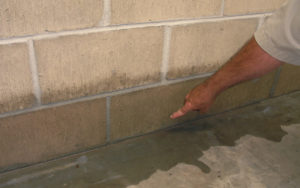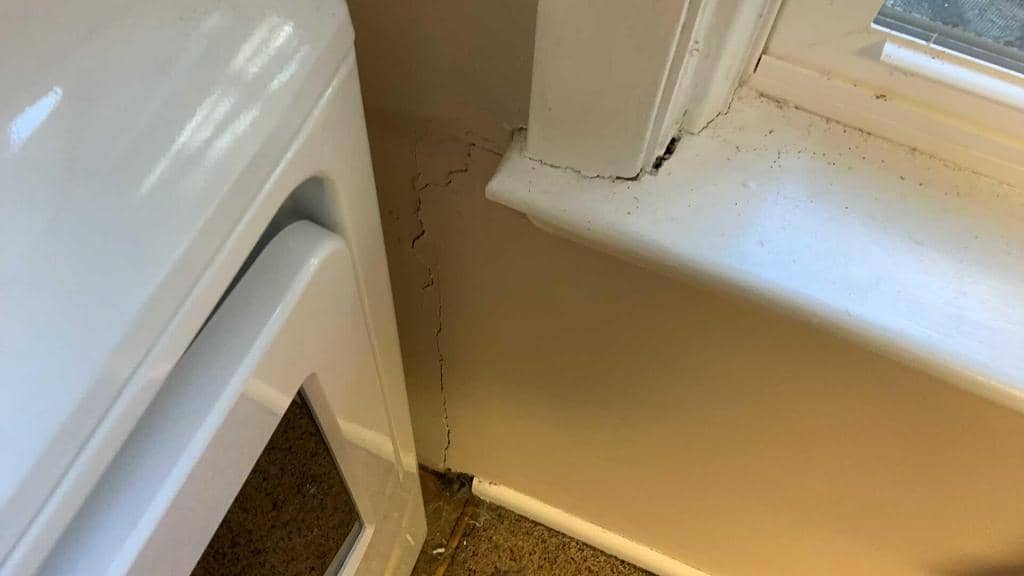Some Known Incorrect Statements About Best Basement Waterproofing
Some Known Incorrect Statements About Best Basement Waterproofing
Blog Article
Best Basement Waterproofing Things To Know Before You Get This
Table of Contents8 Simple Techniques For Best Basement WaterproofingBest Basement Waterproofing - QuestionsAbout Best Basement WaterproofingThe smart Trick of Best Basement Waterproofing That Nobody is Talking AboutIndicators on Best Basement Waterproofing You Should Know
usages excavation techniques towards all-time low of the structure's foundation. includes getting rid of moisture after it has actually gotten in the cellar. AdvantaClean's trained specialists and professionals will certainly locate the water source. If wall surface or piece splits are existing, we will certainly inject polyurethane and epoxies right into the cracks and seal the compromise, preventing additional wetness from getting in.
If there's condensation on the exterior of the foil, you have high moisture in your basement. If the aluminum foil has condensation on the within surface (following to the wall surface), the dirt around your house might be naturally damp from a high water table or bad dirt drainage.
You can waterproof simply your interior wall surfaces, which may address the issue. Or you can waterproof your exterior walls, which is a much better wager yet more costly. Below's the scoop on the various kinds: These thick coverings are cement-like. Once they dry out, they stick permanently to concrete and masonry walls (Best Basement Waterproofing).
Best Basement Waterproofing Fundamentals Explained
Swirl the brush at the final stage of application to provide the wall surface an appealing, completed appearance. Concrete waterproof layers can not be put on previously painted surfaces; check the label. A 5-gallon container expenses about $60. Known as densifiers, they are appropriate just for wall surfaces that haven't been painted or sealed.
However you clean, roll, or spray it on a lot more heavily one gallon covers just 75 square feet, not the 300 square feet typical with basic paint. Water resistant paint is fine for do it yourself application. You can use it over repainted surfaces, and paint over it once it's cured (one gallon prices $37).
It can set you back $10,000 to $15,000, depending on the work required. Outside waterproofing entails excavating all around the residence to the full deepness of the foundation wall surfaces, then installing a water-proof finish or membrane covered by water drainage panels.
A basement without waterproofing is kind of like that. Your cellar does not want to go via a rainstorm without proper protection simply as much as you do not desire to.
Best Basement Waterproofing Things To Know Before You Get This
But if you've done your research study, you 'd recognize there are two sorts of waterproofing: inside and outside. It can obtain perplexing what they both mean, which one's a better investment, and what will actually keep the water out. Don't worry, we assembled this blog site to conveniently specify both techniques for you and go over the benefits and drawbacks of each.
Exterior waterproofing is a waterproofing method that entails securing your home from the outside. The foundation wall surfaces are then cleaned, sealed, and covered with a waterproof membrane layer or sealant.

All About Best Basement Waterproofing
It's a much more engaged procedure that needs excavating up your yard, which is expensive and lengthy. Outside waterproofing involves removing everything bordering your home, consisting of decks, driveways, sidewalks, landscaping, air conditioner units, decks, read the article and so on. If any of the work was done inaccurately and water is still entering your basement, there isn't much you can do to remedy or repair it.
Interior basement waterproofing involves waterproofing from the within. Any kind of water that leaks into your basement is rerouted before it touches your flooring.
It's a reliable technique to water resistant your basement - Best Basement Waterproofing. The drawback of interior basement waterproofing primarily relates to the you can try this out setup procedure. This technique requires stored products, furnishings, and integrated shelving or cupboards to be moved from touching the basement walls. And during setup, your basement can not be used. The greatest difference between both methods is this: Exterior waterproofing is a preventative solution and interior waterproofing is a restorative remedy.
Everything about Best Basement Waterproofing
In conclusion, outside and indoor basement waterproofing are both reliable techniques of securing your home from water damage. Exterior waterproofing creates an obstacle that avoids water from entering your home, while interior waterproofing reroutes water that does enter your home. And it is necessary to note that outside waterproofing is a costly and disruptive installment process when contrasted to indoor waterproofing.
Whichever Homepage approach you choose, make certain you choose a reliable and credible service provider for the work. If you have any inquiries about basement waterproofing, please get to out to us.
You can fill in our kind here, start a conversation in the lower right-hand edge, or call us at 1-800-827-0702.
Report this page